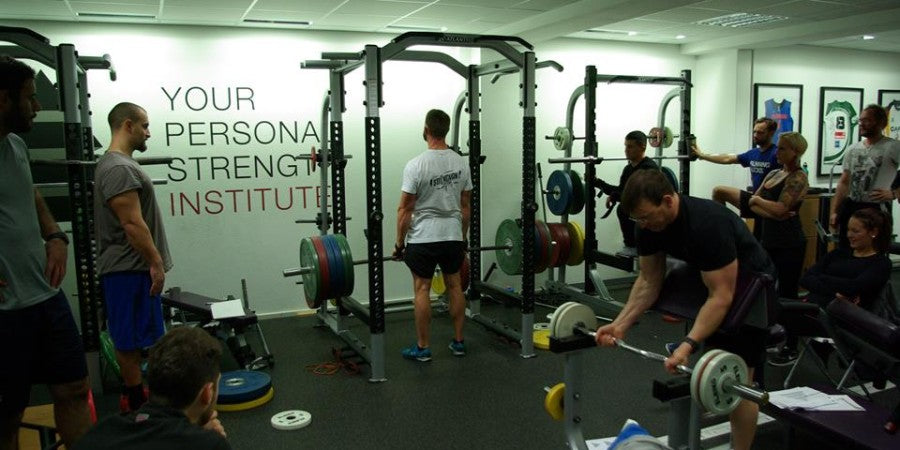At YPSI, we often use rack deadlifts with our clients and athletes. Rack deadlifts, also known as rack deadlifts, are a variation especially for the beginner that complements floor deadlifts and deficit deadlifts very well. With the rack deadlift, the movement does not start from the floor but from the rack. In the starting position, the barbell lies between the middle of the shinbone and the upper edge of the patella (kneecap), depending on the training goal and individual status. The muscles primarily recruited in the rack deadlift are the same as in the floor deadlift - hamstrings, glutes, and erector lockers, as well as forearms, rectus abdominis, and lats.
Rack deadlifts have three primary advantages over floor deadlifts
- Pure hip extension – Deadlifts from the floor require coordinated knee and hip extension, which for many leads to the hip shooting up first and then the weight being lifted via hip extension with almost tucked legs. This increases the load on the lumbar spine, weakens the upper back and leads to a plateau in the medium term. With rack deadlifts, you primarily perform a pure hip extension, which makes the exercise the ideal introduction and precursor to deadlifts from the floor, especially for beginners.
- Strong Upper Back – The higher loads possible with rack deadlifts due to the reduced range of motion strengthen the upper back – scapular retractors, rhomboids and the thoracic spine erector lockers. Since the upper back is inherently a weak link in the chain, rack deadlifts are ideal for strengthening it. No row or pull-up puts as much tension on the upper back muscles as rack deadlifts.
- Higher Loads - Exposing the nervous system and muscles to higher loads is one of the most important aspects of building strength and muscle. Of all the exercises we use consistently at YPSI, the rack deadlift and its variants are the group of exercises where the highest loads can be used. This conditions the nervous system and has an effect on every other exercise through the lower back. Anyone who used 220kg for rack deadlifts in the last training phase will find squats with 120kg much easier in the new phase. If you used 220kg for rack deadlifts on Monday, 100kg for the bench press on Tuesdays will seem significantly lighter.
Rack deadlifts are an excellent exercise especially for introducing deadlifts to beginners, strengthening the upper back and conditioning the nervous system to move higher resistances more easily.
Rack deadlifts are an excellent complement to floor and deficit deadlifts.
Rack deadlifts are a lower body/leg day exercise because the primary joint is the hip, which counts as a lower body in the training plan. Also, we don't recommend scheduling rack deadlifts with another compound leg exercise, such as squats, at the same time as this overloads the lower back, increasing the risk of injury and slowing down progress. 6 to 12 sets of 1 to 6 reps is the range we recommend for rack deadlifts.
Good luck with rack deadlifts!
More on how to build a strong upper back here...
Picture: YPSI Coach Wolfgang Hattingen does rack deadlifts during a training session during the Before'n'After Bootcamp Seminar, Module 1 of the YPSI Trainer License.

